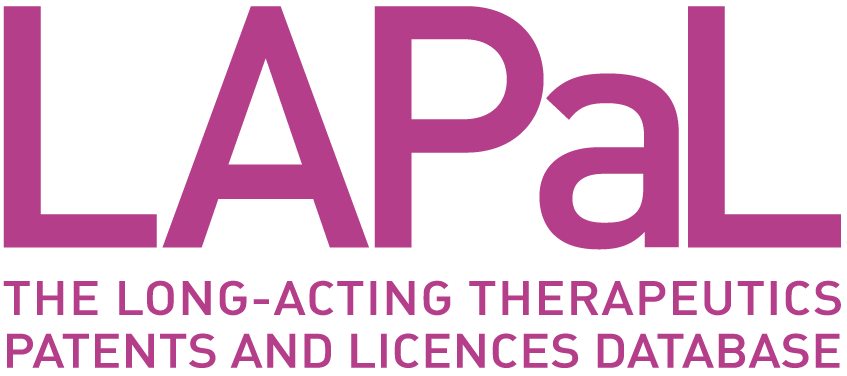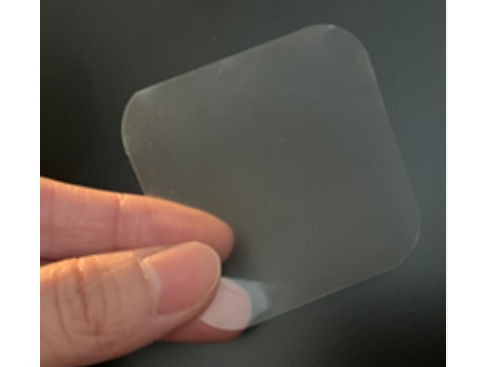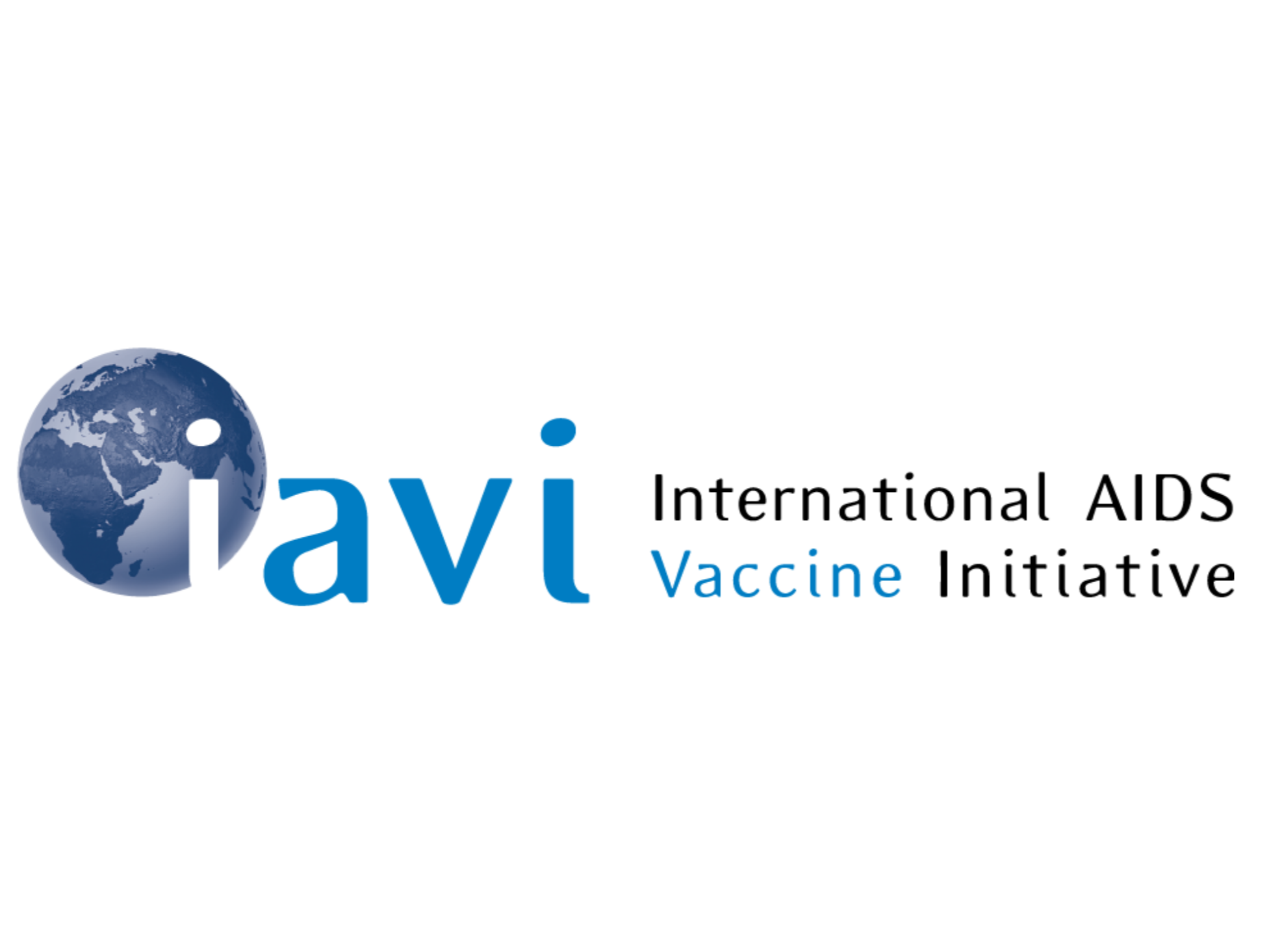
|
Developed by 

|
Supported by 

|

Vaginal Film (MATRIX)
Based on public informationDeveloper(s)

|
University of Pittsburgh Originator
https://www.pitt.edu
United States The University of Pittsburgh, founded in 1787, is one of the oldest universities in the United States. It has a notable research profile, particularly in biomedical research, engineering advancements, and public health initiatives. As a member of the prestigious Association of American Universities (AAU), it reflects a high level of research activity. |

|
Magee-Womens Research Institute & Foundation Originator
https://mageewomens.org/
United States The Magee-Womens Research Institute (MWRI) is a renowned institution dedicated to advancing women's health through research and education. It specializes in areas such as reproductive biology, obstetrics, gynaecology, and women's cancers. MWRI has initiated numerous research studies aimed at improving healthcare outcomes for women globally, with a strong focus on personalized medicine. |
Sponsor(s)

|
USAID https://www.usaid.gov/ |
Partnerships

|
FHI360 https://www.fhi360.org |

|
IAVI https://www.iavi.org |

|
OAK-CREST https://www.oak-crest.org/ |

|
Population Council https://popcouncil.org |

|
Program for Appropriate Technology in Health (PATH) https://www.path.org/ |

|
Public Health Institute https://www.phi.org/ |

|
RTI International https://www.rti.org/ |

|
University of Alabama at Birmingham https://www.uab.edu |
Technology information
Type of technology
Vaginal film
Administration route
Topical (Vaginal)
Development state and regulatory approval
Dapivirine (DPV)
Phase I
Not provided
Description
Matrix vaginal film technology represents a novel, once-monthly, self-administered biodegradable polymer designed for the prevention of HIV and unplanned pregnancies. This polymer is typically cellulosic, such as carboxycellulose. Upon insertion into the vagina, contact with vaginal fluids initiates the slow dissolution of the film, facilitating the gradual release of API drug molecules. This delivery system ensures the sustained release of the API over the course of a month until complete dissolution of the film occurs and the entire drug is delivered locally.
Technology highlight
i. Made up of biodegradable polymer materials ii. Self-administration iii. Minimal impact on the innate microbiome iv. Low systemic toxicity
Technology main components
(i) HEC: HMC: CMC [or] HEC: HPMC: NaCMC (at varying concentrations) (ii) Plasticizer (eg: glycerin, polyethylene gylcol monomethyl ether, propylene glycol, sorbitol sorbitan solution, castor oil) (iii) Dispersant (iv) Humectant (v) Disintegrant (eg: PEG 400, PEG 6000; PEG 8000) (v) Solubilizing/ alkalizing agent (eg: sodium hydroxide)
Information on the raw materials sourcing, availability and anticipated price
Not provided
Delivery device(s)
Not provided
APIs compatibility profile
API desired features
Water-soluble molecules
Water-insoluble molecules
Small molecules
Antiretroviral drugs, including dapivirine, tenofovir disoproxil, and hormone replacement drugs such as levonorgestrel, are the focus of targeted drug of choice. Other targeted therapeutic classes include antibacterial, antiprotozoal, and antifungal drugs.
Additional solubility data
Not provided
Additional stability data
Not provided
API loading: Maximum drug quantity to be loaded
Not provided
API co-administration
2 different APIs : A combination of antiretroviral API and a hormonal API is been used.
LogP
Not provided
Scale-up and manufacturing prospects
Scale-up prospects
Not provided
Tentative equipment list for manufacturing
1) Elcometer 4340 Motorised/Automatic Film Applicator, Mixing vessels (with vacuum applicator) 2) Metrohm, 758 KFD Titrino 3) Coating and drying vessels 4) Packaging instrumentations (not specified)
Manufacturing
The manufacturing of vaginal films using a Hot Melt Extrusion Process requires a cleanroom environment and involves several key steps: Feeding: Selected materials are introduced into an extruder. Melting: In the extruder, materials are heated to a temperature where polymers melt—above their melting point but below their decomposition temperature. Mixing: The molten material is mixed thoroughly to ensure even distribution of the API and excipients. Extrusion: The uniform mixture is extruded through a die to form a continuous sheet or film. Cooling: Extruded film is cooled rapidly to solidifies.
Specific analytical instrument required for characterization of formulation
1) X-ray diffraction (To examine solid state solubility) 2) TX-XT Plus texture analyser 3) UPLC
Clinical trials
STUDY23040051
Identifier
NCT06046053
Link
https://clinicaltrials.gov/study/NCT06046053
Phase
Phase I
Status
Recruiting
Sponsor
Rohan, Lisa, PhD
More details
This study will enroll approximately 100 HIV-negative persons, aged18-45 years, and assigned female sex at birth from sites in the United States, Kenya, South Africa, and Zimbabwe. The study will assess the acceptability and safety of two placebo vaginal films. The placebo films do not contain any active medication, are the same size, but differ by shape (square versus rounded corners). Participants will be randomly assigned to one of the two films and asked to use (self-insert) the assigned film two times (approximately one month apart). Participants will be asked to refrain from sexual activity during the first month of use and may resume usual sexual activity during the second month of use. The study involves answering questions, undergoing pelvic examinations, and collecting blood and
Purpose
MATRIX-002: Trial to Assess Acceptability and Safety of Two Placebo Vaginal Films
Interventions
Intervention 1
Intervention 2
Countries
Sites / Institutions
Not provided
Trials dates
Anticipated Start Date
Not provided
Actual Start Date
2023-10-18
Anticipated Date of Last Follow-up
2024-06-04
Estimated Primary Completion Date
2024-10-01
Estimated Completion Date
2025-04-01
Actual Primary Completion Date
Not provided
Actual Completion Date
Not provided
Studied populations
Age Cohort
- Adults
Genders
- Female
Accepts pregnant individuals
Unspecified
Accepts lactating individuals
Unspecified
Accepts healthy individuals
Yes
Comments about the studied populations
Inclusion Criteria: * Assigned female sex at birth. * Able and willing to provide written informed consent to be screened for and enrolled in MATRIX-002 in one of the study languages. * Able and willing to provide adequate contact/locator information. * Able and willing to comply with all protocol requirements, including: * Abstaining from all receptive sexual intercourse (vaginal, anal, digital, oral) for the first month of product use. * Abstaining from using other intravaginal products for the first month of product use. * Abstaining from engaging in intravaginal practices for the first month of product use. * Refraining from participation in other research studies for the duration of the study unless approved by the Protocol Safety Review Team.
Health status
Not provided
Study type
Interventional (clinical trial)
Enrollment
100
Allocation
Randomized
Intervention model
Parallel Assignment
Intervention model description
Not provided
Masking
Open label
Masking description
Not provided
Frequency of administration
Studied LA-formulation(s)
Studied route(s) of administration
Use case
PrEP
Key resources
FACE
Identifier
NCT01231763
Link
https://clinicaltrials.gov/study/NCT01231763
Phase
Not provided
Status
Completed
Sponsor
University of Pittsburgh
More details
This study is being done to find out what women would want in a film vaginal product for human immunodeficiency virus (HIV) prevention, especially what it should look like and how to apply it. The investigators hypothesize that women will prefer a smooth, clear, and rectangular quick-dissolve vaginal film for HIV prevention over a textured, opaque, square quick-dissolve vaginal film.
Purpose
Acceptability Study of Vaginal Films for HIV Prevention
Interventions
Intervention 1
Countries
Sites / Institutions
Not provided
Trials dates
Anticipated Start Date
Not provided
Actual Start Date
2010-11-01
Anticipated Date of Last Follow-up
2011-02-08
Estimated Primary Completion Date
Not provided
Estimated Completion Date
Not provided
Actual Primary Completion Date
2011-02-01
Actual Completion Date
2011-02-01
Studied populations
Age Cohort
- Adults
- Older Adults
Genders
- Female
- Cisgender female
Accepts pregnant individuals
No
Accepts lactating individuals
No
Accepts healthy individuals
Unspecified
Comments about the studied populations
Not provided
Health status
Not provided
Study type
Not provided
Enrollment
84
Allocation
Not provided
Intervention model
Not provided
Intervention model description
Not provided
Masking
Not provided
Masking description
Not provided
Frequency of administration
Not provided
Studied LA-formulation(s)
Not provided
Studied route(s) of administration
Not provided
Use case
Not provided
Key resources
FAME101
Identifier
NCT03537092
Link
https://clinicaltrials.gov/study/NCT03537092
Phase
Phase I
Status
Completed
Sponsor
Katherine Bunge
More details
This is a phase I randomized trial assessing the safety of a single vaginal placebo film application. In order to develop a vaginal film which can provide extended release of an Antiretroviral (ARV), the film polymers and formulation have been altered from the cellulose and polyvinyl alcohol films used to deliver dapivirine and tenofovir in previous trials. Therefore, the proposed study will evaluate the safety and persistence of these film polymers when applied vaginally.
Purpose
A Study of the Safety and Acceptability of a Placebo Vaginal Film: FAME101
Interventions
Intervention 1
Countries
Sites / Institutions
Not provided
Trials dates
Anticipated Start Date
Not provided
Actual Start Date
2018-05-22
Anticipated Date of Last Follow-up
2020-01-08
Estimated Primary Completion Date
Not provided
Estimated Completion Date
Not provided
Actual Primary Completion Date
2018-12-04
Actual Completion Date
2018-12-04
Studied populations
Age Cohort
- Adults
Genders
- Female
Accepts pregnant individuals
Unspecified
Accepts lactating individuals
Unspecified
Accepts healthy individuals
Yes
Comments about the studied populations
Inclusion Criteria: Women must meet all the following criteria to be eligible for inclusion in the study: 1. Age 18 through 45 years (inclusive) at screening 2. Able and willing to provide written informed consent to be screened for and to take part in the study. 3. Able and willing to provide adequate locator information 4. HIV-uninfected based on testing performed by study staff at screening (per algorithm in Appendix II) 5. In general good health as determined by the site clinician 6. Agree to be sexually abstinent for 48 hours prior to each visit and from Visit 2 to Visit 3 7. At screening, agrees to abstain from any other intravaginal product or penetration (including sex toys, excluding tampons) for 48 hours prior to each visit and between Visit 2 and 3.
Health status
Not provided
Study type
Interventional (clinical trial)
Enrollment
64
Allocation
Not provided
Intervention model
Single group assignment
Intervention model description
Not provided
Masking
Open label
Masking description
Not provided
Frequency of administration
Studied LA-formulation(s)
Studied route(s) of administration
Use case
PrEP
Key resources
FLAG
Identifier
NCT02908503
Link
https://clinicaltrials.gov/study/NCT02908503
Phase
Not provided
Status
Completed
Sponsor
University of Pittsburgh
More details
The purpose of this study is to evaluate use of four different vaginal films - two sizes and two textures. The vaginal films have no active ingredients or medications. Information will be gathered about each film (i.e. ease of insertion, proper placement, opinions about each). The results of this study will help investigators determine which type of vaginal film to use (and how to write product instructions) for future studies.
Purpose
Vaginal Film Administration and Placement Study: FLAG
Interventions
Intervention 1
Countries
Sites / Institutions
Not provided
Trials dates
Anticipated Start Date
Not provided
Actual Start Date
2016-07-01
Anticipated Date of Last Follow-up
2018-07-03
Estimated Primary Completion Date
Not provided
Estimated Completion Date
Not provided
Actual Primary Completion Date
2017-02-14
Actual Completion Date
2017-02-14
Studied populations
Age Cohort
- Adults
Genders
- Female
Accepts pregnant individuals
Unspecified
Accepts lactating individuals
Unspecified
Accepts healthy individuals
Yes
Comments about the studied populations
Inclusion Criteria: 1. Female, Age 18-40 2. Able and willing to provide written informed consent to be screened for and enrolled in the study. 3. Able and willing to provide adequate locator information at screening. 4. HIV-uninfected based on documented testing performed in the previous 6 months or by study staff at screening. 5. In general good health as determined by the site clinician 6. Agree to abstain from any intravaginal or rectal product or device or penetration (including vaginal, anal, or oral sex, masturbation, or sex toys) between each film insertion and the collection of the CVL approximately 24 hours later. Agree to be sexually abstinent for 48 hours prior to the study visits (from enrollment to visit 10). Sexual activity in the 48 hours prior to screening is acceptable.
Health status
Not provided
Study type
Interventional (clinical trial)
Enrollment
32
Allocation
Randomized
Intervention model
Cross-over assignment
Intervention model description
Not provided
Masking
Open label
Masking description
Not provided
Frequency of administration
Studied LA-formulation(s)
Studied route(s) of administration
Use case
PrEP
Key resources
FAME103B
Identifier
NCT04391036
Link
https://clinicaltrials.gov/study/NCT04391036
Phase
Not provided
Status
Completed
Sponsor
Katherine Bunge
More details
This is a double-blinded crossover study to evaluate whether Eudragit® content impacts the ability to self-insert placebo vaginal films. Thirty women will self-insert one high and and one low Eudragit® content film. The insertion order will be randomized in a 1:1 ratio. After inserting each film, participants will complete a survey reporting their perceptions and experience. The primary endpoint is successful insertion defined as all of the film inside the vagina upon visual assessment by a study clinician. Secondary outcomes include preference for the low level or high level Eudragit® formulation film with respect to insertion and participants' description of identified challenges.
Purpose
Randomized Cross-Over Study of Self-Insertion of Two Placebo Vaginal Film Formulations
Interventions
Intervention 1
Intervention 2
Countries
Not provided
Sites / Institutions
Not provided
Trials dates
Anticipated Start Date
Not provided
Actual Start Date
2020-07-14
Anticipated Date of Last Follow-up
2022-02-02
Estimated Primary Completion Date
Not provided
Estimated Completion Date
Not provided
Actual Primary Completion Date
2020-10-26
Actual Completion Date
2020-10-26
Studied populations
Age Cohort
- Adults
Genders
- Female
Accepts pregnant individuals
Unspecified
Accepts lactating individuals
Unspecified
Accepts healthy individuals
Yes
Comments about the studied populations
Inclusion Criteria: * Ages 18-45 * Intact uterus by participant report * Agrees to abstain from inserting anything into the vagina for 24 hours prior to the study visit Exclusion Criteria: * Menopausal (as defined as amenorrhea for one year or more without an alternative etiology) * Hysterectomy (including total and supracervical) * Currently pregnant or pregnancy within 90 days of enrollment * Lactating * Symptoms of a urogenital infection including vaginal discharge, pain, odor, or itching * Menses at the time of enrollment * Known allergy or hypersensitivity to any of the components of the placebo film * Any condition that, in the opinion of the Investigator, would preclude provision of consent, make participation in the study unsafe, complicate interpretation of study outcome data,
Health status
Not provided
Study type
Interventional (clinical trial)
Enrollment
30
Allocation
Randomized
Intervention model
Cross-over assignment
Intervention model description
Not provided
Masking
Triple-blind masking
Masking description
Not provided
Frequency of administration
Studied LA-formulation(s)
Studied route(s) of administration
Use case
PrEP
Key resources
FAME103
Identifier
NCT04319718
Link
https://clinicaltrials.gov/study/NCT04319718
Phase
Phase I
Status
Completed
Sponsor
Hillier, Sharon, PhD
More details
This is a proof of concept study to determine whether an extended release vaginal film can deliver drug for seven days. Two film formulations containing MK-2048 which differ by dissolution and spreadability attributes will be compared for safety and pharmacokinetic outcomes.
Purpose
Safety and Pharmacokinetics of Two Vaginal Film Formulations Containing the Integrase Inhibitor MK-2048
Interventions
Intervention 1
Intervention 2
Countries
Not provided
Sites / Institutions
Not provided
Trials dates
Anticipated Start Date
Not provided
Actual Start Date
2020-08-19
Anticipated Date of Last Follow-up
2023-03-01
Estimated Primary Completion Date
Not provided
Estimated Completion Date
Not provided
Actual Primary Completion Date
2022-02-25
Actual Completion Date
2022-10-10
Studied populations
Age Cohort
- Adults
Genders
- Female
Accepts pregnant individuals
Unspecified
Accepts lactating individuals
Unspecified
Accepts healthy individuals
Yes
Comments about the studied populations
Inclusion Criteria: * Able and willing to provide written informed consent. * Willing to use an effective method of birth control throughout the duration of the study. Examples of effective methods include: hormonal methods (other than NuvaRing®), intrauterine device, bilateral tubal ligation, same sex partner, partner with a vasectomy, abstinence (defined as no vaginal sex for one month prior to screening). * Able and willing to provide adequate locator information * HIV-uninfected based on testing performed by study staff at screening * In general good health as determined by the site clinician * Agree to be sexually abstinent, including use of sex toys, from visit 2 (Enrollment) until visit 7 (7 days after the biopsy visit) and 48 hours prior to all study visits.
Health status
Not provided
Study type
Interventional (clinical trial)
Enrollment
37
Allocation
Randomized
Intervention model
Parallel Assignment
Intervention model description
Not provided
Masking
Quadruple-blind masking
Masking description
Not provided
Frequency of administration
Studied LA-formulation(s)
Studied route(s) of administration
Use case
PrEP
Key resources
FAME 02
Identifier
NCT01548560
Link
https://clinicaltrials.gov/study/NCT01548560
Phase
Phase I
Status
Completed
Sponsor
International Partnership for Microbicides, Inc.
More details
This is a study to determine the safety of dapivirine gel and dapvirine film for healthy, HIV-uninfected women aged 18-45 years using the product for 7 daily doses.
Purpose
Assessing the Safety of Dapivirine Gel and Film Formulations
Interventions
Intervention 1
Intervention 2
Countries
Not provided
Sites / Institutions
Not provided
Trials dates
Anticipated Start Date
Not provided
Actual Start Date
2012-08-01
Anticipated Date of Last Follow-up
2017-09-05
Estimated Primary Completion Date
Not provided
Estimated Completion Date
Not provided
Actual Primary Completion Date
2014-02-01
Actual Completion Date
2014-02-01
Studied populations
Age Cohort
- Adults
Genders
- Female
Accepts pregnant individuals
Unspecified
Accepts lactating individuals
Unspecified
Accepts healthy individuals
Yes
Comments about the studied populations
Inclusion Criteria: * Age 18 through 45 years (inclusive) at screening * Able and willing to provide written informed consent to be screened for and to take part in the study. * Able and willing to provide adequate locator information * HIV-uninfected based on testing performed by study staff at screening (per algorithm in Appendices I) * Per participant report, using an effective method of contraception at enrollment; hormonal method (except vaginal ring) used continuously for the past 30 days; intrauterine device (IUD inserted at least 30 days prior to enrollment); female sterilization; abstinent from sexual activity with male partner for the past 30 days; or sexual activity with vasectomized partner; and willingness to use effective method of contraception until the completion of final.
Health status
Not provided
Study type
Interventional (clinical trial)
Enrollment
60
Allocation
Randomized
Intervention model
Parallel Assignment
Intervention model description
Not provided
Masking
Double-blind masking
Masking description
Not provided
Frequency of administration
Studied LA-formulation(s)
Studied route(s) of administration
Use case
PrEP
Key resources
FAME-02B
Identifier
NCT01924091
Link
https://clinicaltrials.gov/study/NCT01924091
Phase
Phase I
Status
Completed
Sponsor
International Partnership for Microbicides, Inc.
More details
To compare drug concentrations in vaginal fluid, genital tissue, and blood
Purpose
PK/PD of Single Dose Dapivirine Vaginal Film
Interventions
Intervention 1
Intervention 2
Countries
Not provided
Sites / Institutions
Not provided
Trials dates
Anticipated Start Date
Not provided
Actual Start Date
2013-09-01
Anticipated Date of Last Follow-up
2017-09-05
Estimated Primary Completion Date
Not provided
Estimated Completion Date
Not provided
Actual Primary Completion Date
2014-09-01
Actual Completion Date
2014-09-01
Studied populations
Age Cohort
- Adults
- Older Adults
Genders
- Female
Accepts pregnant individuals
Unspecified
Accepts lactating individuals
Unspecified
Accepts healthy individuals
Yes
Comments about the studied populations
Inclusion Criteria: 1. 18 years of age or older with a history of receptive vaginal intercourse. 2. HIV negative by EIA within 28 days of enrollment. 3. Understand and agree to local STI reporting requirements. 4. Able and willing to provide written informed consent to take part in the study. 5. Able and willing to provide adequate information for locator purposes. 6. Availability to return for all study visits, barring unforeseen circumstances. 7. Availability to return for the second formulation dosing at the same time in the subject's menstrual cycle as when the first formulation was administered, at least 10 days before menses. 8. Willing to abstain from vaginal intercourse and insertion of anything (e.g., drug, vaginal douche, or sex toy) in vagina for 72 hours before each study prod
Health status
Not provided
Study type
Interventional (clinical trial)
Enrollment
60
Allocation
Randomized
Intervention model
Cross-over assignment
Intervention model description
Not provided
Masking
Double-blind masking
Masking description
Not provided
Frequency of administration
Studied LA-formulation(s)
Studied route(s) of administration
Use case
PrEP
Key resources
DAIDS-ES #12015
Identifier
NCT02280109
Link
https://clinicaltrials.gov/study/NCT02280109
Phase
Phase I
Status
Completed
Sponsor
CONRAD
More details
Not provided
Purpose
Basic Science
Interventions
Intervention 1
Intervention 2
Countries
Sites / Institutions
Not provided
Trials dates
Anticipated Start Date
Not provided
Actual Start Date
2014-11-01
Anticipated Date of Last Follow-up
Not provided
Estimated Primary Completion Date
Not provided
Estimated Completion Date
Not provided
Actual Primary Completion Date
2015-12-01
Actual Completion Date
Not provided
Studied populations
Age Cohort
- Adults
- Older Adults
Genders
- Female
- Cisgender female
Accepts pregnant individuals
Unspecified
Accepts lactating individuals
Unspecified
Accepts healthy individuals
Unspecified
Comments about the studied populations
Not provided
Health status
Not provided
Study type
Interventional (clinical trial)
Enrollment
10
Allocation
Randomized
Intervention model
Cross-over assignment
Intervention model description
Not provided
Masking
Open label
Masking description
Not provided
Frequency of administration
Studied LA-formulation(s)
Studied route(s) of administration
Use case
Not provided
Key resources
FAME 04
Identifier
NCT01989663
Link
https://clinicaltrials.gov/study/NCT01989663
Phase
Phase I
Status
Completed
Sponsor
CONRAD
More details
This is a Phase I, five arm, single site, randomized, double blind placebo-controlled trial assessing the safety of tenofovir vaginal gel and film formulations. HIV negative women will be randomized to gel or film, tenofovir or placebo. This study will provide additional information in the evaluation of vaginal films containing microbial agents in humans. In addition to safety, the efficacy of these formulations against HIV in an ex vivo biopsy challenge model will be compared. This study is the first study assessing the safety of tenofovir film in humans. Tenofovir film is formulated in a cellulose based vaginal film containing hydroxypropyl methyl cellulose (HPMC) E5 (5 cp), hydroxyethyl cellulose (HEC), Sodium Carboxymethylcellulose (NaCMC), and glycerin. The excipients of the film hav
Purpose
A Phase I Trial to Assess the Safety of Tenofovir Gel and Film Formulations: FAME 04
Interventions
Intervention 1
Intervention 2
Intervention 3
Intervention 4
Intervention 5
Countries
Sites / Institutions
Not provided
Trials dates
Anticipated Start Date
Not provided
Actual Start Date
2013-11-01
Anticipated Date of Last Follow-up
2016-07-26
Estimated Primary Completion Date
Not provided
Estimated Completion Date
Not provided
Actual Primary Completion Date
2015-01-01
Actual Completion Date
2015-01-01
Studied populations
Age Cohort
- Adults
Genders
- Female
Accepts pregnant individuals
Unspecified
Accepts lactating individuals
Unspecified
Accepts healthy individuals
Yes
Comments about the studied populations
Inclusion Criteria: Women must meet all of the following criteria to be eligible for inclusion in the study: 1. Age 18 through 45 years (inclusive) at screening 2. Able and willing to provide written informed consent to be screened for and enrolled in the study. 3. Able and willing to provide adequate locator information at screening. 4. HIV-uninfected based on testing performed by study staff at screening (per algorithm in Appendices I) 5. In general good health as determined by the site clinician 6. Agree to abstain from any intravaginal or rectal product or device or penetration (including vaginal, anal, or oral sex, masturbation, or sex toys) from 7 days prior to Visit 2 (Enrollment Visit) until 7 days after the completion of Visit 3.
Health status
Not provided
Study type
Interventional (clinical trial)
Enrollment
78
Allocation
Randomized
Intervention model
Parallel Assignment
Intervention model description
Not provided
Masking
Quadruple-blind masking
Masking description
Not provided
Frequency of administration
Studied LA-formulation(s)
Studied route(s) of administration
Use case
PrEP
Key resources
Quatro
Identifier
NCT02602366
Link
https://clinicaltrials.gov/study/NCT02602366
Phase
Not provided
Status
Completed
Sponsor
CONRAD
More details
The purpose of The Quatro Study is to assess the acceptability, preferences, user experience and effect on sexual behavior of four different vaginal microbicide or multi-purpose technology (MPT) delivery forms, using placebo products in 18-30 year old African women: rapidly disintegrating vaginal insert, intravaginal ring (IVR), film and gel. The study also examines adherence to the dosage forms through objective markers, developed for each dosage form prior to the commencement of the study.
Purpose
The Quatro Study: Acceptability Study of (Placebo) Vaginal Delivery Forms for Preventing HIV and Unintended Pregnancy
Interventions
Intervention 1
Intervention 2
Intervention 3
Intervention 4
Countries
Sites / Institutions
Not provided
Trials dates
Anticipated Start Date
Not provided
Actual Start Date
2016-06-06
Anticipated Date of Last Follow-up
2018-05-15
Estimated Primary Completion Date
Not provided
Estimated Completion Date
Not provided
Actual Primary Completion Date
2017-06-30
Actual Completion Date
2017-09-30
Studied populations
Age Cohort
- Adults
Genders
- Female
Accepts pregnant individuals
Unspecified
Accepts lactating individuals
Unspecified
Accepts healthy individuals
Yes
Comments about the studied populations
Inclusion Criteria: * Age 18-30 * In good health, as determined by the site Investigator or designee based on clinical history * Willing and able to comply with study procedures and attend monthly follow-up visits * Willing and able to provide informed consent * Fluent in one of the languages being used in the study (English, Shona or Zulu) * Not intending to travel or move out of the research catchment area for the next 6 months * Sexually active defined by vaginal intercourse with a male at least 4 times per month in the past 3 months and plan to be sexually active during the study duration Exclusion Criteria: * HIV positive * Pregnant, or intention to become pregnant during the clinical study * Prior participation in any HIV-prevention or MPT product demonstration study.
Health status
Not provided
Study type
Interventional (clinical trial)
Enrollment
422
Allocation
Randomized
Intervention model
Cross-over assignment
Intervention model description
Not provided
Masking
Open label
Masking description
Not provided
Frequency of administration
Studied LA-formulation(s)
Studied route(s) of administration
Use case
PrEP
Key resources
D15-135
Identifier
NCT02569697
Link
https://clinicaltrials.gov/study/NCT02569697
Phase
Phase I
Status
Completed
Sponsor
CONRAD
More details
The purpose of this study is to develop markers for use of placebo vaginal products and measure markers of mucosal semen exposure among healthy women. The study will also monitor safety of placebo product use.
Purpose
Development of Adherence Biomarkers for Multiple Microbicide and Multipurpose Prevention Technology (MPT) Dosage Forms
Interventions
Intervention 1
Intervention 2
Intervention 3
Intervention 4
Countries
Sites / Institutions
Not provided
Trials dates
Anticipated Start Date
Not provided
Actual Start Date
2015-10-01
Anticipated Date of Last Follow-up
2016-09-01
Estimated Primary Completion Date
Not provided
Estimated Completion Date
Not provided
Actual Primary Completion Date
2016-05-01
Actual Completion Date
2016-05-01
Studied populations
Age Cohort
- Adults
Genders
- Female
Accepts pregnant individuals
Unspecified
Accepts lactating individuals
Unspecified
Accepts healthy individuals
Yes
Comments about the studied populations
Volunteers must meet all of the following criteria prior to genital sampling at Visit 2: * Age 18 to 50 years, inclusive * General good health (by volunteer history and per investigator judgment) without any clinically significant systemic disease (including, but not limited to significant liver disease/hepatitis, gastrointestinal disease, kidney disease, thyroid disease, osteoporosis or bone disease, and diabetes) * History of Pap smears and follow-up consistent with standard medical practice as outlined in the Study Manual or willing to undergo a Pap smear at V1 * Willing to give voluntary consent and sign an informed consent form * Willing and able to comply with protocol requirements * Protected from pregnancy by: * hysterectomy * reliable methods of contraception other than male.
Health status
Not provided
Study type
Interventional (clinical trial)
Enrollment
50
Allocation
Not provided
Intervention model
Cross-over assignment
Intervention model description
Not provided
Masking
Open label
Masking description
Not provided
Frequency of administration
Studied LA-formulation(s)
Studied route(s) of administration
Use case
PrEP
Key resources
A15-140
Identifier
NCT02722343
Link
https://clinicaltrials.gov/study/NCT02722343
Phase
Phase I
Status
Completed
Sponsor
CONRAD
More details
This single site study is designed to describe and measure the efficacy of oral versus vaginal dosing of TFV-based products, specifically emtricitabine/tenofovir disoproxil fumarate oral tablets (Truvada) vs tenofovir intravaginal rings (IVR).
Purpose
Exploratory Pharmacodynamic Study of Tenofovir-Based Products
Interventions
Intervention 1
Intervention 2
Countries
Not provided
Sites / Institutions
Not provided
Trials dates
Anticipated Start Date
Not provided
Actual Start Date
2016-04-01
Anticipated Date of Last Follow-up
2016-09-01
Estimated Primary Completion Date
Not provided
Estimated Completion Date
Not provided
Actual Primary Completion Date
2016-08-01
Actual Completion Date
2016-08-01
Studied populations
Age Cohort
- Adults
Genders
- Female
Accepts pregnant individuals
Unspecified
Accepts lactating individuals
Unspecified
Accepts healthy individuals
Yes
Comments about the studied populations
Inclusion Criteria: * General good health (by volunteer history and per investigator judgment) without any clinically significant systemic disease (including, but not limited to significant liver disease/hepatitis, gastrointestinal disease, kidney disease, thyroid disease, osteoporosis or bone disease, and diabetes) and with an intact gastrointestinal tract, uterus and cervix * Currently have regular menstrual cycles of 21-35 days by participant record * Willing to abstain from vaginal intercourse and any other vaginal activity including use of vaginal products (tampons, spermicides, lubricants, and douches) other than study products: * 48 hours before Visit 2 until six days after Visit 2 * 48 hours before Visit 3 until six days after Visit 4
Health status
Not provided
Study type
Interventional (clinical trial)
Enrollment
25
Allocation
Randomized
Intervention model
Parallel Assignment
Intervention model description
Not provided
Masking
Open label
Masking description
Not provided
Frequency of administration
Studied LA-formulation(s)
Studied route(s) of administration
Use case
PrEP
Key resources
Excipients
Proprietary excipients used
No proprietary excipient used
Novel excipients or existing excipients at a concentration above Inactive Ingredients Database (IID) for the specified route of administration
No novel excipient or existing excipient used
Residual solvents used
No residual solvent used
Additional features
Other features of the technology
- Biodegradable
- Drug-eluting
- Non-removable
- Reservoir-type
- Room temperature storage
Release properties
Preclinical data indicate sufficient dissolution and drug release properties for a range of antiretroviral agents within the film matrix. Notably, a single-dose study of a 40 mg tenofovir (TFV) film demonstrated superior TFV delivery compared to the TFV vaginal gel formulation. Plasma and cervicovaginal fluid TFV concentrations were elevated on day 1 following TFV film administration compared to the gel, though levels converged by days 3 and 7 days later.
Injectability
Not applicable
Safety
A Phase 1 clinical trial involving 78 healthy volunteers demonstrated that 91% of participants experienced solely Grade 1 adverse events (AEs). These AEs were evenly distributed across both the film tenofovir treatment and film placebo control groups, indicating a favourable safety and tolerability profile for the film formulation. Nevertheless, adherence challenges were reported by 50% of the study population.
Stability
A six-month accelerated stability test was conducted at 40°C to evaluate the integrity of vaginal films produced via hot melt extrusion. The results demonstrated that the weight of the films remained stable over the testing period. Variability in water content and puncture strength was found to be insignificant, indicating robust physical properties. The films with tenofovir showed good compatibility with various strains of lactobacilli as well.
Storage conditions and cold-chain related features
Preclinical stability studies demonstrated no loss of API from vaginal films stored at 30, 40, and 50°C for 14 days. However, further investigation of storage conditions is warranted to establish long-term stability at cold storage conditions.
Potential application(s)
Therapeutic area(s)
Use case(s)
Use of technology
Ease of administration
- Self-administered
Frequency of administration
Monthly
User acceptance
Not provided
Targeted user groups
Age Cohort- Adults
- Older Adults
- Female
- Cisgender female
- Transgender female
Pregnant individuals
No
Lactating individuals
Unspecified
Healthy individuals
Unspecified
Comment
Not provided
Potential associated API(s)
Dapivirine (DPV)
Class(es)
Antiretroviral agent
Development stage
Phase I
Clinical trial number(s)
NCT06046053
Foreseen/approved indication(s)
HIV
Foreseen user group
Not provided
Foreseen duration between application(s)
Once monthly
Applications to Stringent Regulatory Authorities (SRA) / regulatory approvals
Not provided
Levonorgestrel (LNG)
Class(es)
Synthetic progestin
Development stage
Phase I
Clinical trial number(s)
Not provided
Foreseen/approved indication(s)
Contraception and HIV prevention
Foreseen user group
18-50 years women
Foreseen duration between application(s)
Once monthly
Applications to Stringent Regulatory Authorities (SRA) / regulatory approvals
Not provided
Patent info
Description
Vaginal Films
Brief description
Provided herein are stable, dissolvable films containing active ingredients, such as antimicrobial composition, antiviral compositions, or anti-retroviral compositions for intravaginal or intrarectal placement to provide prophylaxis against viral infections.
Representative patent
US20240099986A1
Category
Device
Patent holder
University of Pittsburgh
Exclusivity
Not provided
Expiration date
September 13, 2043
Status
Granted
Description
Hot melt extrusion for pharmaceutical vaginal film products
Brief description
Hot melt extrusion is disclosed as a process for forming vaginal drug delivery films. The methods involve extruding a composition comprising one or more active pharmaceutical ingredients and one or more polymer carriers at an elevated temperature through a die to thereby provide the film. Films prepared by hot melt extrusion are also described.
Representative patent
US20230346693A1
Category
Manufacturing Process
Patent holder
University of Pittsburgh
Exclusivity
Not provided
Expiration date
May 3, 2043
Status
Granted
Supporting material
Publications
<p><span style="color: rgb(33, 33, 33);">Bunge, K. E., Dezzutti, C. S., Hendrix, C. W., Marzinke, M. A., Spiegel, H. M. L., Moncla, B. J., Schwartz, J. L., Meyn, L. A., Richardson-Harman, N., Rohan, L. C., & Hillier, S. L. (2018). FAME-04: A Phase 1 trial to assess the safety, acceptability, pharmacokinetics and pharmacodynamics of film and gel formulations of tenofovir. </span><em style="color: rgb(33, 33, 33);">Journal of the International AIDS Society</em><span style="color: rgb(33, 33, 33);">, </span><em style="color: rgb(33, 33, 33);">21</em><span style="color: rgb(33, 33, 33);">(8), e25156. </span><a href="https://doi.org/10.1002/jia2.25156" rel="noopener noreferrer" target="_blank" style="color: rgb(33, 33, 33);">https://doi.org/10.1002/jia2.25156</a></p>
Introduction: Fast-dissolving vaginal film formulations release antiretroviral drugs directly into vaginal fluid and may be as efficient at drug delivery yet more acceptable to women than gels. In this Phase 1 vaginal film study, the safety, acceptability, pharmacokinetics and pharmacodynamics of two doses of tenofovir (TFV) film and TFV 1% gel were compared to corresponding placebo formulations.
Methods: Seventy-eight healthy HIV negative women were randomized to self-insert daily vaginal film (10 mg TFV, 40 mg TFV or placebo) or 4 mL of vaginal gel (TFV 1% [40 mg] or placebo) for seven days. Grade 2 and higher adverse events (AEs) related to study product were compared across study arms using Fisher's exact test. Plasma TFV concentrations were measured before and 2 hours after last product use. Paired cervical and vaginal tissue biopsies obtained 2 hours after the last dose were measured to determine tenofovir diphosphate (TFV-DP) concentrations and exposed to HIV in an ex vivo challenge assay. Acceptability was assessed through questionnaire.
Results: There was only one grade 2 or higher related AE, the primary endpoint; it occurred in the placebo gel arm. AEs occurred in 90% of participants; the majority (91%) were grade 1. AEs were similar across study arms. TFV concentrations in plasma and TFV-DP concentrations in cervical and vaginal tissues were comparable between 40 mg TFV film and the TFV gel groups. There was a significant relationship between reduced viral replication and TFV-DP concentrations in cervical tissues. Film users were less likely to report product leakage than gel users (66% vs. 100%, p < 0.001).
Conclusions: Films were safe and well tolerated. Furthermore, films delivered TFV to mucosal tissues at concentrations similar to gel and were sufficient to block HIV infection of genital tissue ex vivo.
<p><span style="color: rgb(33, 33, 33);">Fan, M. D., Kramzer, L. F., Hillier, S. L., Chang, J. C., Meyn, L. A., & Rohan, L. C. (2017). Preferred Physical Characteristics of Vaginal Film Microbicides for HIV Prevention in Pittsburgh Women. </span><em style="color: rgb(33, 33, 33);">Archives of sexual behavior</em><span style="color: rgb(33, 33, 33);">, </span><em style="color: rgb(33, 33, 33);">46</em><span style="color: rgb(33, 33, 33);">(4), 1111–1119. </span><a href="https://doi.org/10.1007/s10508-016-0816-1" rel="noopener noreferrer" target="_blank" style="color: rgb(33, 33, 33);">https://doi.org/10.1007/s10508-016-0816-1</a></p>
Unprotected heterosexual intercourse is the leading cause of HIV acquisition in women. Due to the complex nature of correct and consistent condom use by both men and women, developing alternative female-controlled HIV prevention options is a global health priority. Vaginal films containing antiretroviral drugs are a potential delivery system for the prevention of HIV acquisition through sexual contact. In this study, we explored women's preferences regarding physical characteristics of microbicide vaginal films through questionnaires and focus groups. Eighty-four sexually active, ethnically diverse women 18-30 years of age from Pittsburgh, Pennsylvania, participated in the study. Women visually and manually examined a variety of vaginal films, as well as three other vaginal products undergoing evaluation for HIV prevention: tablet, ring, and gel. Means and standard deviations or frequencies and 95 % confidence intervals were calculated for questionnaire data. Focus groups were audio-recorded, transcribed verbatim, and coded for content analysis. Women most frequently preferred vaginal films to be smooth and thin (63 %), translucent (48 %), and 2″ × 2″ square size (36 %). Driving these preferences were five major themes: ease and accuracy of use, desire for efficacy, discretion, intravaginal comfort and minimal impact, and minimizing disruption of sexual mood/activities. Women's preferences for various microbicide vaginal film physical attributes represented a balance of multiple values. In general, women desired a comfortable, efficacious, easy to use, and minimally intrusive product.
<p><span style="color: rgb(33, 33, 33);">Robinson JA, Marzinke MA, Fuchs EJ, Bakshi RP, Spiegel HML, Coleman JS, Rohan LC, Hendrix CW. Comparison of the Pharmacokinetics and Pharmacodynamics of Single-Dose Tenofovir Vaginal Film and Gel Formulation (FAME 05). J Acquir Immune Defic Syndr. 2018 Feb 1;77(2):175-182. doi: </span><a href="10.1097/QAI.0000000000001587" rel="noopener noreferrer" target="_blank" style="color: rgb(33, 33, 33);">10.1097/QAI.0000000000001587</a><span style="color: rgb(33, 33, 33);">. PMID: 29135651; PMCID: PMC5821271.</span></p>
While pre-exposure prophylaxis with oral tenofovir (TFV) disoproxil fumarate/emtricitabine reduces HIV acquisition rates, poor adherence to and acceptability of daily vaginal gels has led to development of vaginal film formulations to improve adherence and, potentially, enable episodic use
In this two-arm, cross-over study of a fast-dissolving tenofovir film (40 mg) compared to a previously studied semisolid tenofovir 1% gel (40 mg), 10 healthy women received a single vaginal dose of each study product. Clinical, pharmacokinetic, and antiviral assessments were performed over one week post-dose. Nine of 10 participants experienced mild to moderate adverse effects, similar between products, with no severe adverse events or events attributed to study products. TFV concentrations after film dosing exceeded concentrations after gel dosing in plasma between 8 and 24 hours (p≤0.02). TFV concentrations in cervicovaginal fluid and both TFV and TFV diphosphate concentrations in cervical tissue homogenates were higher following film dosing (all p values < 0.04). The differences ranged from median (interquartile range) 2.9-fold (1.1, 9.0; midvaginal cervicovaginal fluid) to 4.4-fold (2.9, 7.7; plasma). Neither film nor gel demonstrated reduced cervical tissue biopsy infectivity after ex vivo HIV challenge. Single dose tenofovir film demonstrated consistently higher concentrations in plasma and cervicovaginal samples when compared to gel during the first day following dosing. Single dose cervical tissue TFV-DP concentrations at 5 hours exceeded steady-state concentrations previously reported with daily oral Truvada® dosing. Tenofovir film may provide an alternative to tenofovir oral and gel formulations. Clinical efficacy remains to be tested.
Additional documents
No documents were uploaded
Useful links
There are no additional links
Access principles
|
|
Collaborate for developmentConsider on a case by case basis, collaborating on developing long acting products with potential significant public health impact, especially for low- and middle-income countries (LMICs), utilising the referred to long-acting technology Not provided |
|
|
Share technical information for match-making assessmentProvide necessary technical information to a potential partner, under confidentiality agreement, to enable preliminary assessment of whether specific medicines of public health importance in LMICs might be compatible with the referred to long-acting technology to achieve a public health benefit Not provided |
|
|
Work with MPP to expand access in LMICsIn the event that a product using the referred to long-acting technology is successfully developed, the technology IP holder(s) will work with the Medicines Patent Pool towards putting in place the most appropriate strategy for timely and affordable access in low and middle-income countries, including through licensing Not provided |
Comment & Information
Illustrations

Matrix Monthly Dapivirine and Levonorgestrel Dual-Purpose Vaginal Film
Matrix4prevention. (n.d.). Monthly dapivirine and levonorgestrel dual-purpose vaginal film. Matrix4prevention. https://www.matrix4prevention.org/products/monthly-dapivirine-and-levonorgestrel-dual-pur